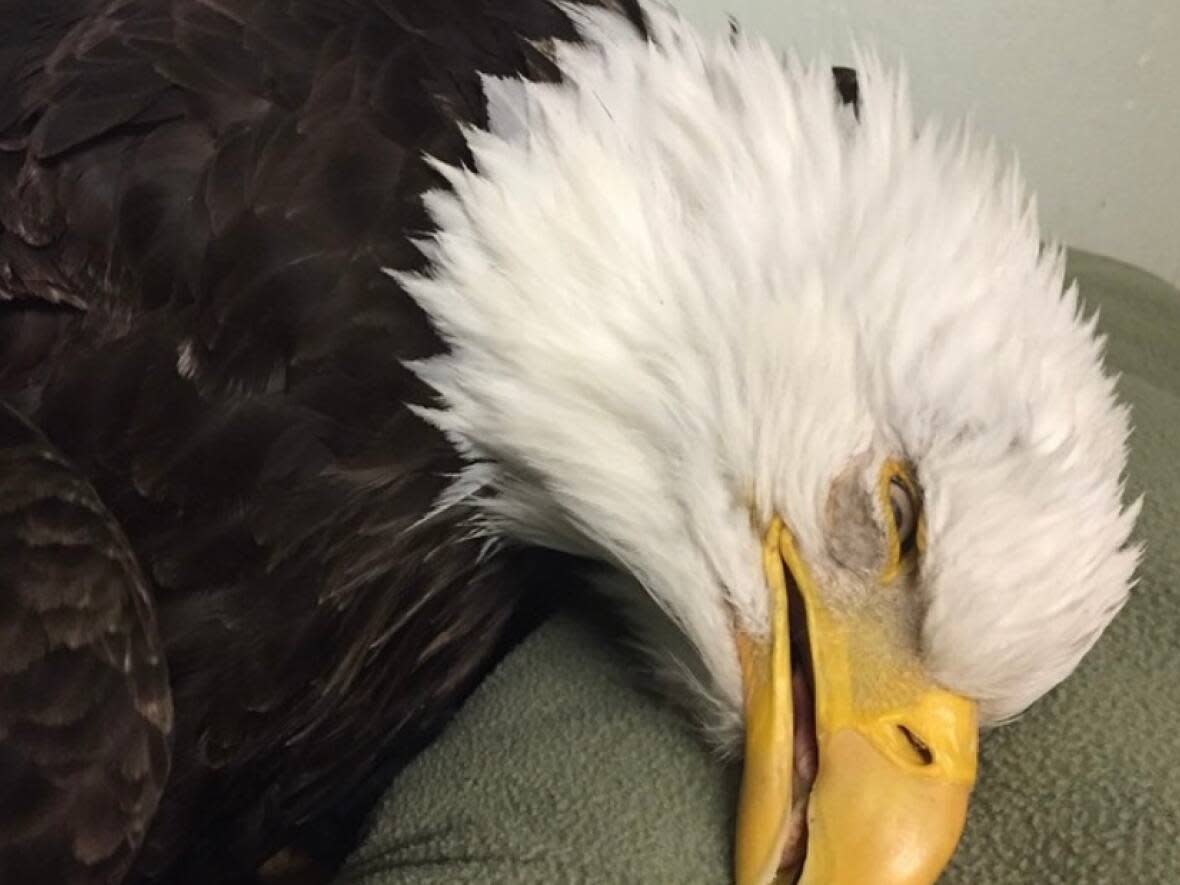Animal welfare advocates call on hunters to stop using lead ammunition that is poisoning wildlife

Wildlife advocates are urging hunters to reconsider some of their hunting practices — in particular, those that are harming eagles and other wild animals long after the hunters have left the area.
Leila Riddall, a volunteer with the Haida Gwaii Animal Helpline, says there has been an increase in eagles falling ill after ingesting lead.
When an eagle ingests lead, it can't function properly, and in some cases, it can't fly.
"They're unable to hunt, and that's usually when we come across them when they're weak, and they can't fly," she said. "They're usually pretty emaciated at that point."
Riddall said hunters are leaving out deer carcasses that have been contaminated by lead ammunition. When the eagles feed on the carcass, they ingest the lead.
According to the George Miksch Sutton Avian Research Centre based in Oklahoma, consuming just small amounts of lead from a lead shot or lead core bullets, which make up most traditional ammunition, is enough to kill an adult bald eagle.
Rob Hope, the general manager of the Orphaned Wildlife Rehabilitation Society in Delta, B.C., said this is an issue throughout the province — not just on Haida Gwaii.
"It's an issue that can be resolved quite easily by simply switching ammunition, not only for animal safety and health but also for human health," he told CBC's Daybreak North.
He said eagles suffering from lead poisoning often die. If they're taken into treatment soon enough, they are treated, hydrated, given time to rest and can recover.
"Unfortunately, more often than not, they don't make a recovery, and they do perish."

His organization has started collecting data on the number of eagles their facility receives that have ingested lead. They take blood samples from each eagle that appears to be suffering from lead poisoning symptoms to understand how much they've consumed and note the time of year the animal was brought into their care.
"Usually, we start to really see it pick up around November into February," he said — during or shortly after hunting season in B.C. for many species.
The goal is to be able to show hunters that their lead ammunition is having adverse effects on wildlife, Hope said, and will ideally encourage them to consider using other types of ammo.
"For every one [hunter] that switches over, that's one less that we have to worry about having lead in the environment," he said.
Riddall said that in her neck of the woods, alternatives to lead ammunition aren't always readily available, making it difficult for hunters to make the change.
Hope admits that lead ammunition costs less, and some hunters are worried about how their firearms will be affected by non-lead bullets.
If non-lead ammunition isn't an option, he suggests hunters dispose of carcasses before leaving an area through either burning or burying.
"Any of those methods will minimize and deter the animals from scavenging what they see."


